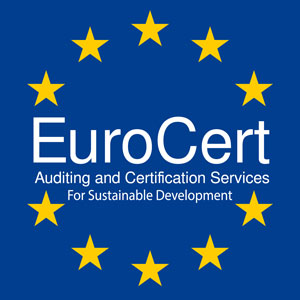From “Light Green” to Sustainable Buildings
World watch Institute examines necessary policy tools to move toward more sustainable buildings
Washington, D.C.—-As more people move to urban areas in search of economic opportunities, the number of buildings that are needed to house them continues to rise. It is estimated that by 2030, an additional 1.4 billion people will live in cities, of which 1.3 billion will dwell in cities of developing countries. The increasing number of buildings has long-term impacts on both the environment and natural resources. Fortunately, a variety of policy tools hold promise for promoting sustainability in buildings, according to Kaarin Taipale, contributing author of the World watch Institute’s State of the World 2012: Moving Toward Sustainable Prosperity.
The buildings in which we live and work are a major consumer of energy, responsible for some 30-40 percent of all carbon dioxide emissions, a similar share of total solid waste, and 12 percent of all fresh water used. With the rate of urbanization reaching record levels, there will be more construction and buildings than ever before.
The introduction and enforcement of effective public policies can be the cheapest and most efficient method for promoting sustainability in the construction and use of buildings, Taipale says. The goal is to radically reduce buildings’ environmental footprint and long-term negative social and financial effects.
“Policies can control (via restrictive regulations), motivate (via incentives), or call for attention (via awareness-raising), and successful policy packages may combine all three characteristics,” notes Taipale, an urban researcher from Finland. “In the rush to market everything as ‘green,’ builders superficially label their buildings as such. But although a solar panel on the roof may look good in a photo, it is certainly no proof of the sustainability of a building.”
Even modestly “light-green buildings,” as Taipale describes them, account for only a tiny fraction of total construction worldwide. She notes that the best way to move construction beyond greenwashing is through strict enforcement of ambitious building regulations and fulfillment of measurable targets.
In search of a “best policy” in her State of the World 2012 chapter, “From Light Green to Sustainable Buildings,” Taipale suggests considering four dimensions in a policy package:
Process. It is important to take into account the entire life-cycle of a building, from design and construction to its use and demolition. Some posit that designating a sustainability coordinator for the planning and construction period should be a requirement for any building permit. An additional tool for the time span when the building is being used is a mandatory “maintenance diary,” documenting the various ways the building is serviced and renovated.
Performance. What matters most is how well the entire building performs, not how its individual parts might adhere to requirements. Setting minimum energy performance standards, for example, makes more sense than specifying the thickness of a thermal insulation. A growing set of core criteria has evolved by which to measure building performance in terms of resource use. These consider greenhouse gas emissions, energy and water use, and waste production, among others. Policies can require that certain minimum performance standards and benchmarks be met.
Sustainable Infrastructure. Buildings need efficient infrastructures that save resources and provide everyone equal access to basic services such as fresh water and sanitation, energy, communication, and public transport. The quality of these infrastructures determines the level of urban sustainability. National water legislation, for example, can help secure access to safe drinking water for urban residents for a fair price.
Resource Use. Sustainability of resource use considers financial, human, and natural resources. Shifting toward a greater reliance on renewable energy is the most efficient method to reduce carbon dioxide emissions and mitigate climate change. Such a shift also helps reduce local air pollution and health hazards. We need higher energy performance requirements for new construction and refurbishment, however, because it does not make much sense to waste renewable energy in buildings that are not energy efficient.
No single policy is going to change light-green buildings into sustainable ones. Mainstreaming sustainability starts with setting targets and doing preliminary designs, and it needs to be followed through using maintenance and performance monitoring.
Worldwatch’s State of the World 2012, released in April 2012, focuses on the themes of inclusive sustainable development discussed at Rio+20, the 20-year follow-up to the historic Earth Summit of 1992, also held in Rio de Janeiro. The report presents a selection of innovative ideas and practices to achieve global environmental sustainability while meeting human needs and providing jobs and ensuring dignity for all.

